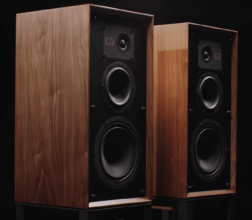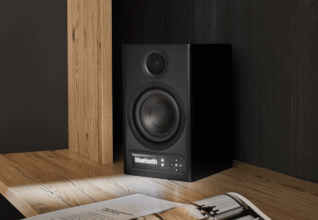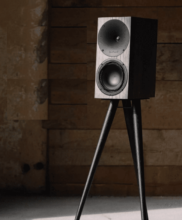Wilson Benesch Discovery 3Zero review
At first glance, the Wilson Benesch Discovery 3zero might look like a premium monitor. But this unique 2.5-way design is much more than that. It shouldn’t be positioned like a small nearfield speaker. Tested at €25,000 per pair.
By Marius Dittert
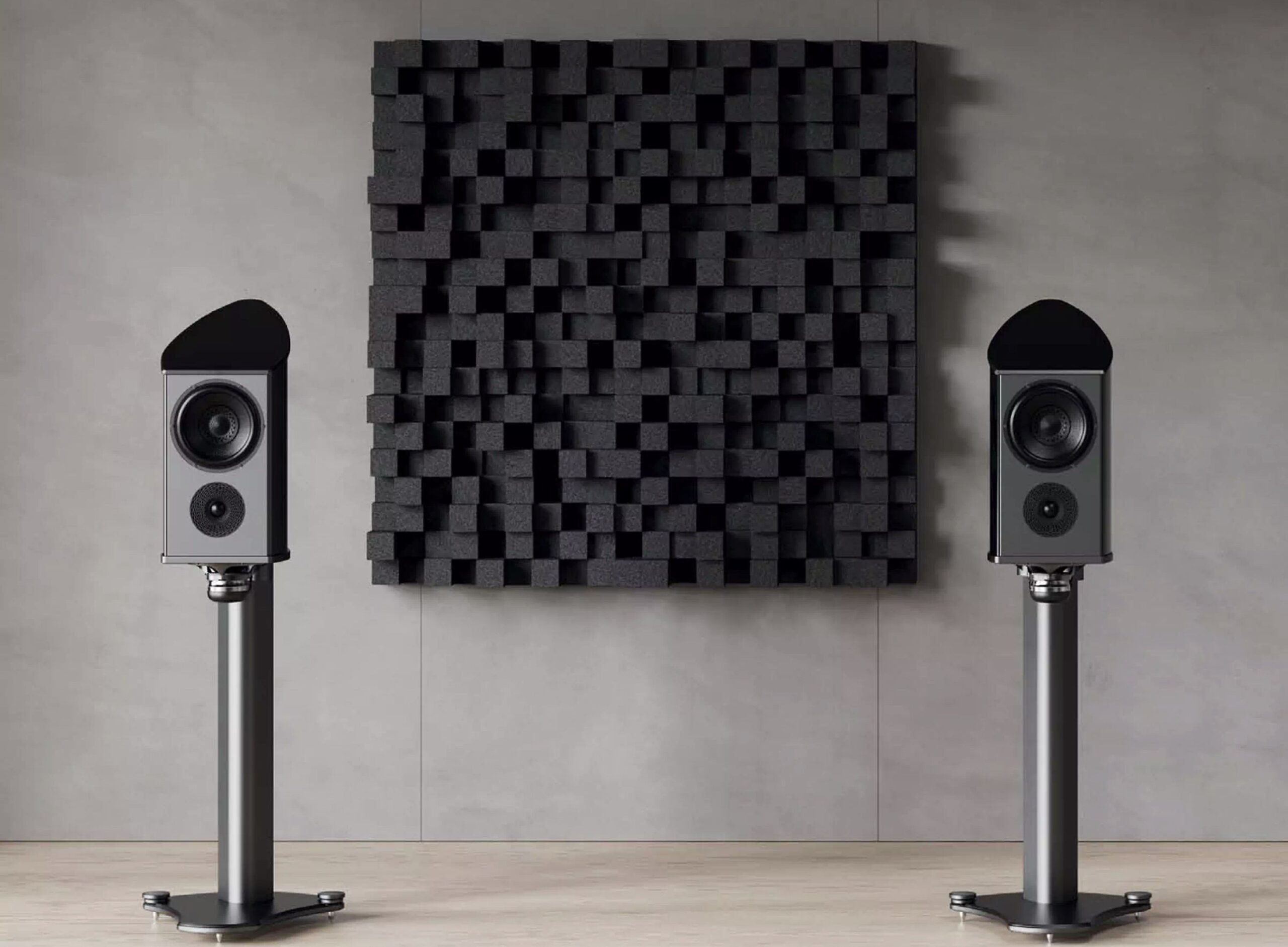
Since 1989, the company’s DNA has included intensive basic research, participation in various research and development projects—often from academic environments and supported by the British government through the Department for Business, Energy, and Industrial Strategy. Additionally, the company is committed to manufacturing even the smallest details in-house, from drivers to connectors.
The enormous effort put in by company founder Craig Milnes and his 20 or so employees is already evident in the 35.5 kg (!) entry-level model of Wilson Benesch’s Fibonacci series: the Discovery 3zero, which is available for €25,000 per pair.
The Sheffield-based company refers to this 2.5-way speaker with its distinctive woofer, which protrudes from the lower part of the cabinet, as a “stand monitor.” However, as this test will show, this superbly crafted “compact speaker,” down to the smallest screw, should not be misunderstood as just a monitor.
But let’s start with the stand construction, which forms a single unit with the Discovery 3zero. Its advantages: first, a relatively small cabinet that reduces unwanted resonances; second, space at the bottom of the cabinet for an isobaric bass driver. Both points contribute to extremely clean bass reproduction.
Wilson Benesch has always operated somewhat differently from the rest of the British high-end scene. The company from Sheffield is still family-owned and not in foreign hands. Furthermore, their almost German-like focus on technology reveals a tendency toward over-engineering. Wilson Benesch has as little to do with the notorious English cottage industry as Buckingham Palace has with a fan autograph session.
Due to their higher mass inertia, and secondly, due to their large diaphragm, which acts like an open window through which unabsorbed sound from inside the speaker escapes to the outside.
However, whether sound can escape through the thick diaphragm of a 15-inch woofer is debatable. But for smaller drivers, as used in the third generation of the Discovery, this might be true. This is ultimately the reason why Wilson Benesch employs two 17cm drivers in an isobaric setup.
Isobaric Bass Driver
But what are the deeper reasons for the North English company’s preference for relatively small, isobaric basses since their major reference speaker Bishop?
According to Craig Milnes, not only large speaker cabinets pose a problem, but also heavy bass drivers.
In an isobaric driver arrangement, two identical but oppositely connected woofers are mounted together like halves of a shell, pushing the air trapped between them back and forth. The outer driver is thus shielded from what’s happening inside the cabinet. Since the two drivers work in parallel and are acoustically closely coupled, they can be considered as one in the lower frequency range (up to about 500 Hz in the Discovery). However, its equivalent air volume is now only half, meaning that a desired low cut-off frequency can be achieved with half the usual cabinet volume in this design.
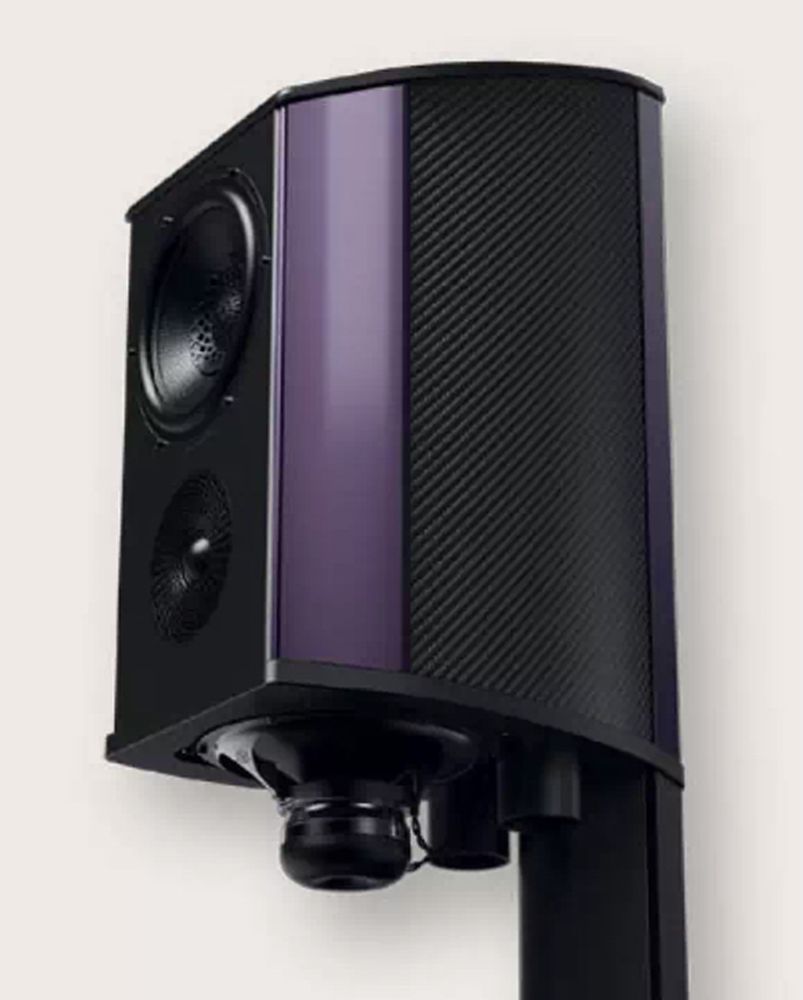
You see, the circle closes towards a more compact cabinet. The Brits are consistent in this regard, that must be said. Additionally, the isobaric bass, together with the characteristic bass reflex tube with the long outer port, gives the Discovery 3zero an absolutely unmistakable look.
Fibonacci Formula for the Midrange
Let’s now take a look at the other drivers of this British luxury speaker. First, there’s the 17 cm midrange driver, which is housed in its own chamber. Its diaphragm, like that of the bass driver, is made of isotactic polypropylene. This material is said to be particularly torsion-resistant due to its crystalline structure. In the center of the diaphragm, where the dust cap would normally be, there is a noticeable disc. Its structure and pattern, reminiscent of the mathematical Fibonacci formula, are intended to help improve linearity and reduce distortion. The disc consists of five elements and is manufactured in-house by Wilson Benesch using a 3D printing process.
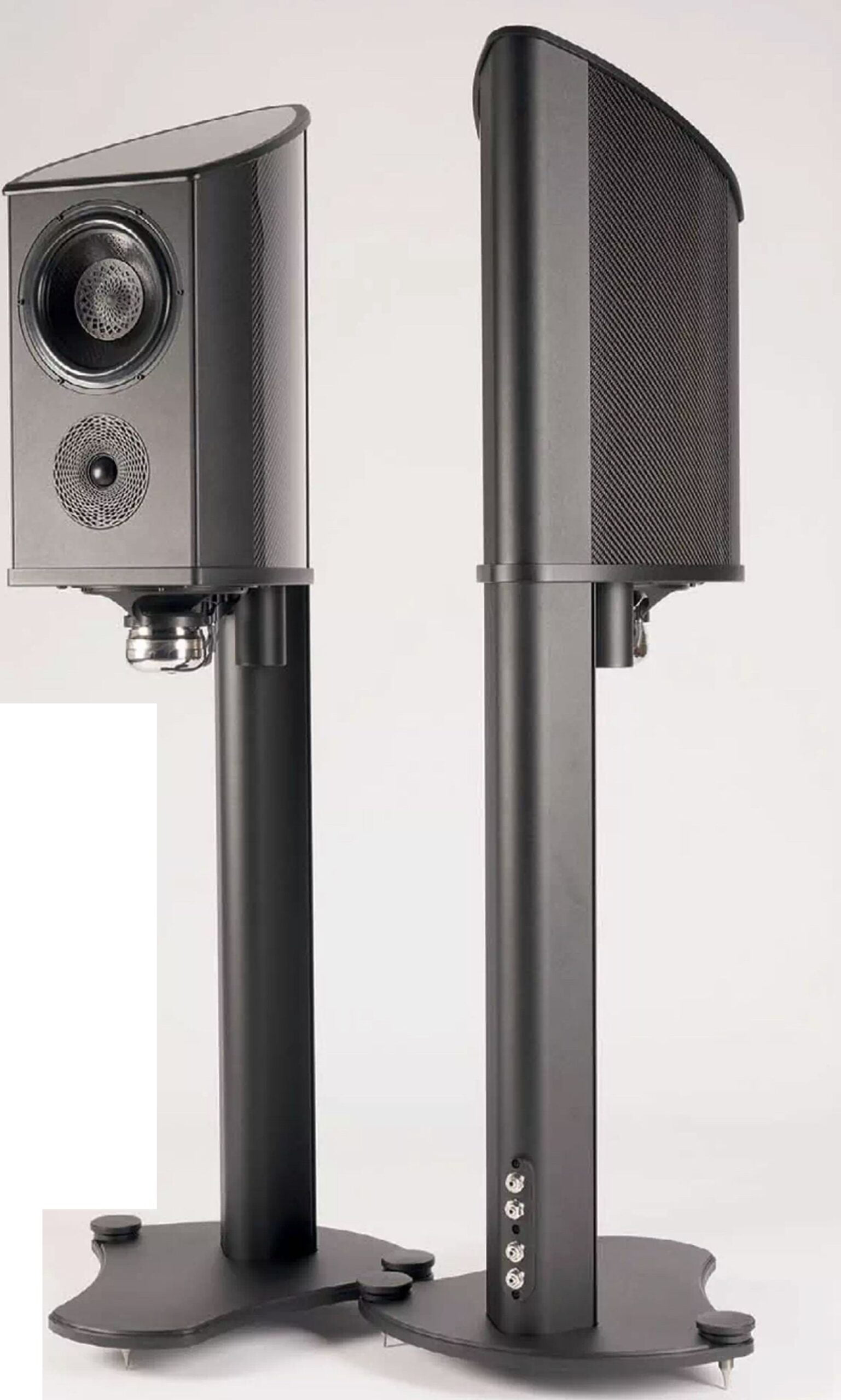
The Sheffield-based company also makes the 25 mm tweeter themselves. Its dome is made of a silk-paper-carbon fiber composite. To absorb the rearward sound components of the tweeter, the British speaker builders have equipped the Discovery 3zero with a labyrinth-like structure inside.
Let’s talk about the cabinet: like the entire construction, it is superbly crafted. During the obligatory knock test, one can feel the effect of the high-tech materials used.
Under the outer carbon layer is a monocoque—a bio-composite cabinet made of rubber, cork, and resin, which is said to be stiffer and at the same time more resonance-dampening than in the two previous Discovery generations. Additionally, it is more sustainable.
Electrostatic-like Sound
After the initial failed experiments with the usual free-standing placement for floor-standing speakers, the Discovery 3zero came into fascinating form with about 20 centimeters of distance to the rear wall and about four meters from the listening position with a wide base. Since it belongs to the category of extremely high-resolution transducers, the test team avoided pairing it with analytically sounding electronics. Instead, “juicy” sounding integrated amplifiers from Luxman and T+A were used. A tube amp would certainly have worked too. Our measurements show that the nominal 4-ohm speaker can handle amplifiers with high internal resistance.
When placed near a wall, the sound image practically “snapped” into place: the bass, which was still on the lean side, now had not only pace but also more fullness, and the peculiarities of the midrange (see measurement comment) were hardly noticeable. The brilliant highs even seemed almost “right” at a longer listening distance.
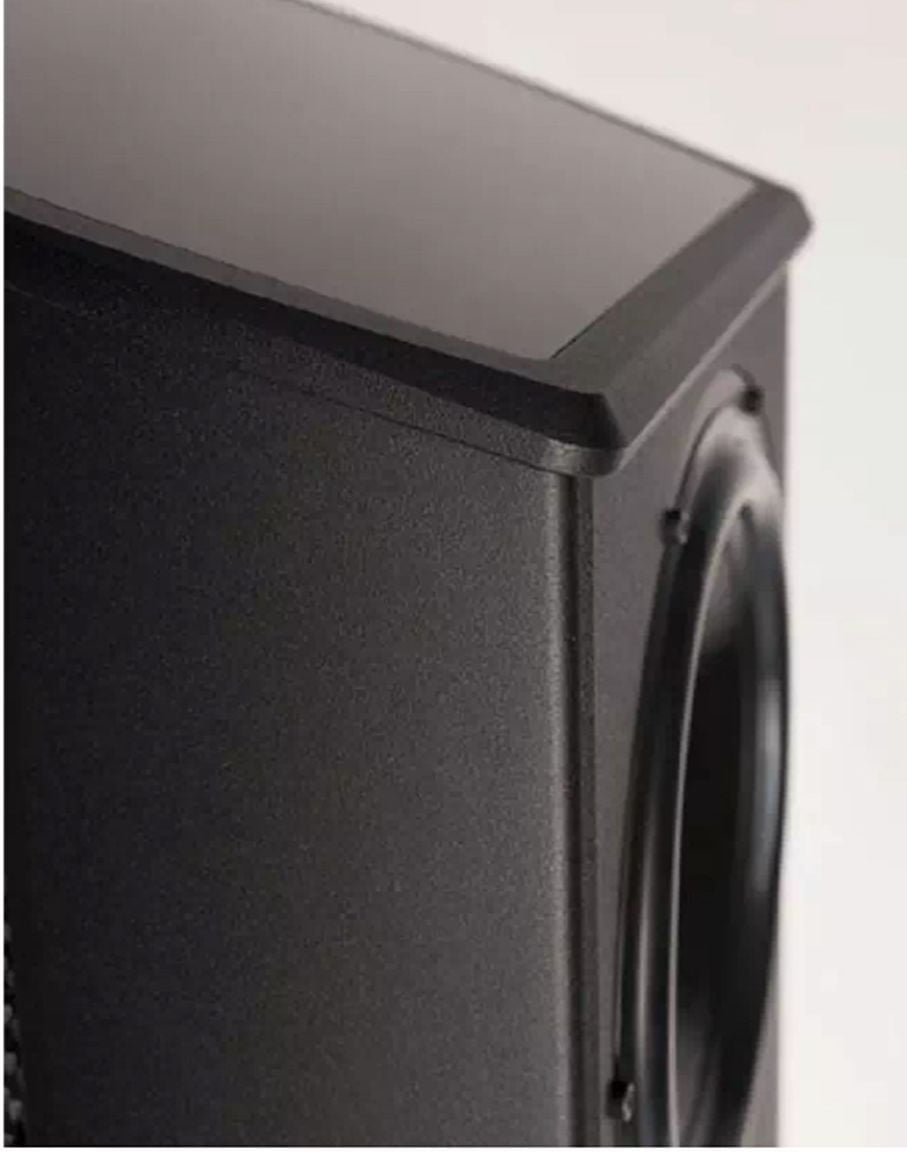
Yes, the Discovery 3zero is not a mainstream speaker and is indeed sensitive to placement. But—and this cannot be emphasized enough—Wilson Benesch has an independent character and masters some aspects so well that few competing products can keep up.
Especially in the bass, the Discovery 3zero has an incredible ability to differentiate. What Wilson Benesch brought to light in this frequency range in terms of structure, fine dynamic gradations, delicate shadings, and details is truly unparalleled—when placed near a wall.
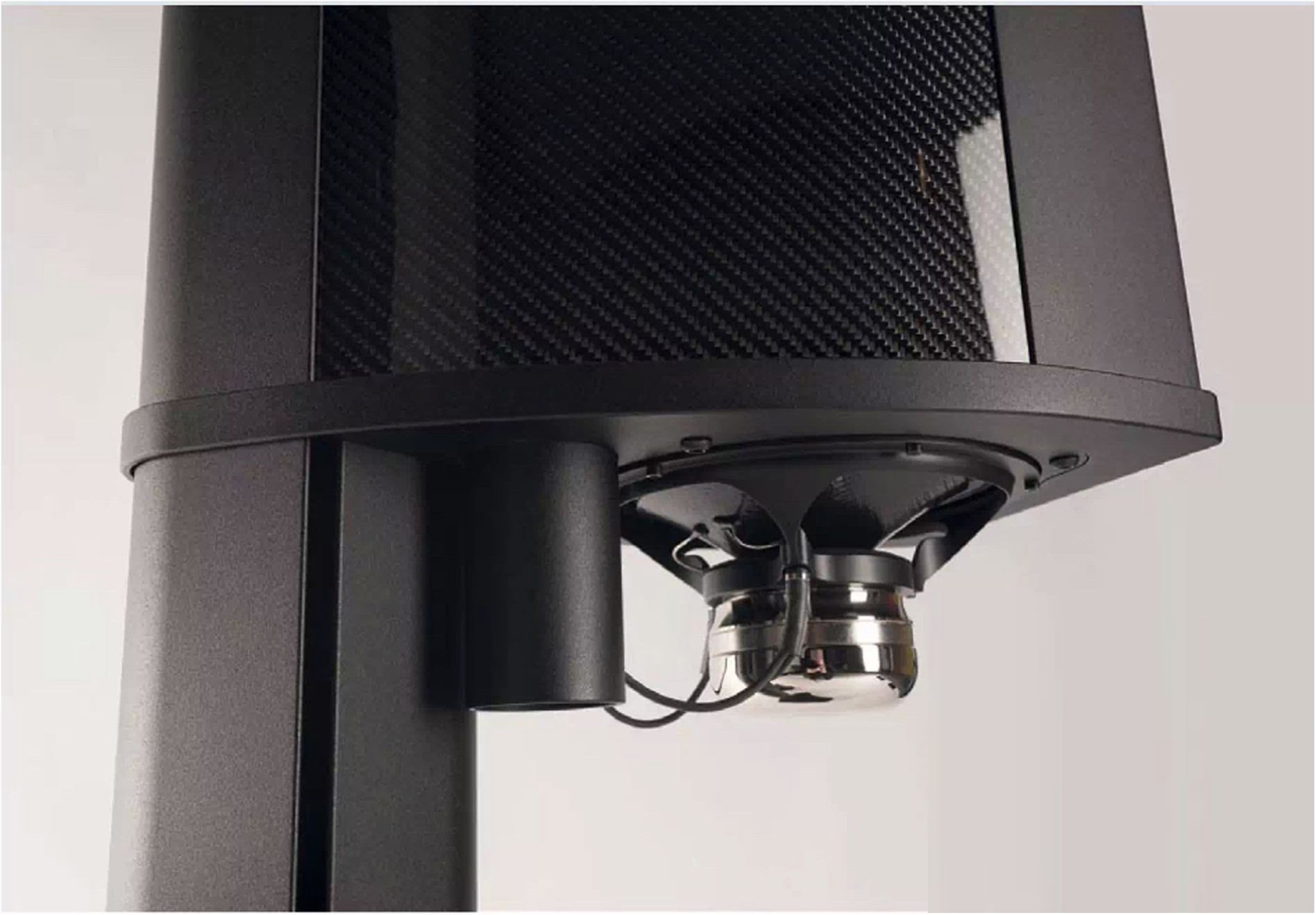
How highly differentiated the bass of this British speaker was could be marveled at by the writer when listening to one of his favorite albums from the 80s, the bestseller “Dare!” by The Human League. The short bass impulses that wander from left to right and back again in “The Sound of the Crowd” came across unbelievably clear and tangible, as did the fat synth bass in the following track “Darkness.” The reviewer had rarely heard the individual layers of the high-gloss production by Martin Rushent so finely unraveled. Incidentally, with the consistent use of the Roland MicroComposer MC8 and the Linn DrumComputer LM1, “Dare!” pointed in a new production direction (Depeche Mode comes to mind). Thanks to its highly precise, resonance-free, and crystal-clear sound ideal, one quickly understands this via the Discovery 3zero, as ears and brain have to exert comparatively little effort with this British speaker and can embark on a highly exciting acoustic discovery journey. One more word about imaging quality: Despite the compact cabinet, the Wilson Benesch “painted” a soundstage of impressive size and managed the feat of sounding completely detached and almost holographic, even near a rear wall, during an otherwise always two-dimensional sounding electro track like “Make Us Stronger” by Ghost Rider.
Overall, the British speaker was fast, highly differentiated, incredibly three-dimensional, and transparent. “On top” it was sometimes a bit too much of a good thing, which was especially disturbing with poor recordings.
Measurement
2.5-way floor-standing speaker with isobaric dual bass and bass reflex port. The frequency response rises noticeably towards the highs (+5 dB) and is quite wavy (±1.9 dB). Wide, even dispersion to the sides (blue), the upper mids are noticeably quieter 10° above the central axis (green). Little deep bass (59/47 Hz -3/-6 dB), but low-distortion (right) and bass capable of handling high levels (103 dB SPL) for its size. Waterfall measurement is free of ringing, resulting in good impulse fidelity. Average sensitivity (82 dB/2 V), maximum power requirement 125 W/4 ohms or 60 W/4 ohms at 100 dB SPL.
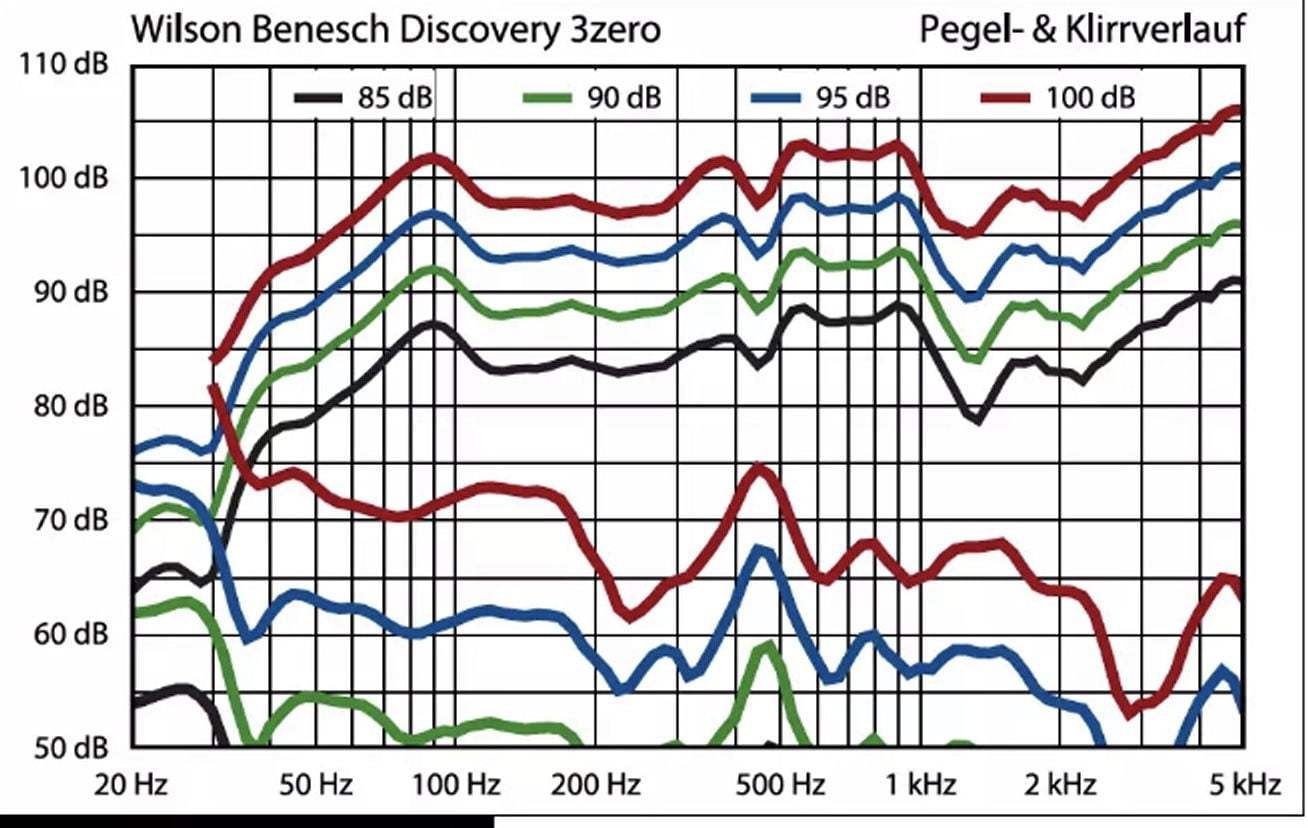

Specification
Type: 2.5-way floor-standing speaker
Principle: Bass Reflex
Cabinet volume: 16 liters
Dimensions: 97 x 28 x 41 cm
Weight: 35.5 kg
Chassis: 17 cm midrange driver, 2 x 17 cm woofer in isobaric configuration, 25 mm dome tweeter
Crossover frequency: 500/5000 Hz
Measured frequency response: 59 Hz to 30 kHz (-6 dB)
Sensitivity: 82 dB/2 V
Nominal impedance: 4 ohms
Max. sound pressure: 103 dB
Power requirements: 125 watts per channel/4 ohms, amplifier with high internal resistance recommended
Highlights: Outstanding build quality, good low-distortion bass for its size
Sound: Fast, highly differentiated, transparent, electrostatic-like sound
Verdict
Wilson Benesch remains true to itself and gives the entry-level model of the Fibonacci series an acoustic slimming treatment that requires suitable equipment and careful placement. Those who pay attention to both points will be rewarded with a fascinating, almost electrostatic sound, whose pronounced ability is to free music from any “earthly weight.” Closing your eyes, you get the impression of listening to a completely detached performance rather than a mere music recording.
Wilson Benesch Discovery 3Zero - Product Showcase
00:00 Introduction 01:05 Who is Wilson Benesch? 04:37 The Discovery 3Zero 06:06 Why Discovery? 08:05 Technical Features ...



